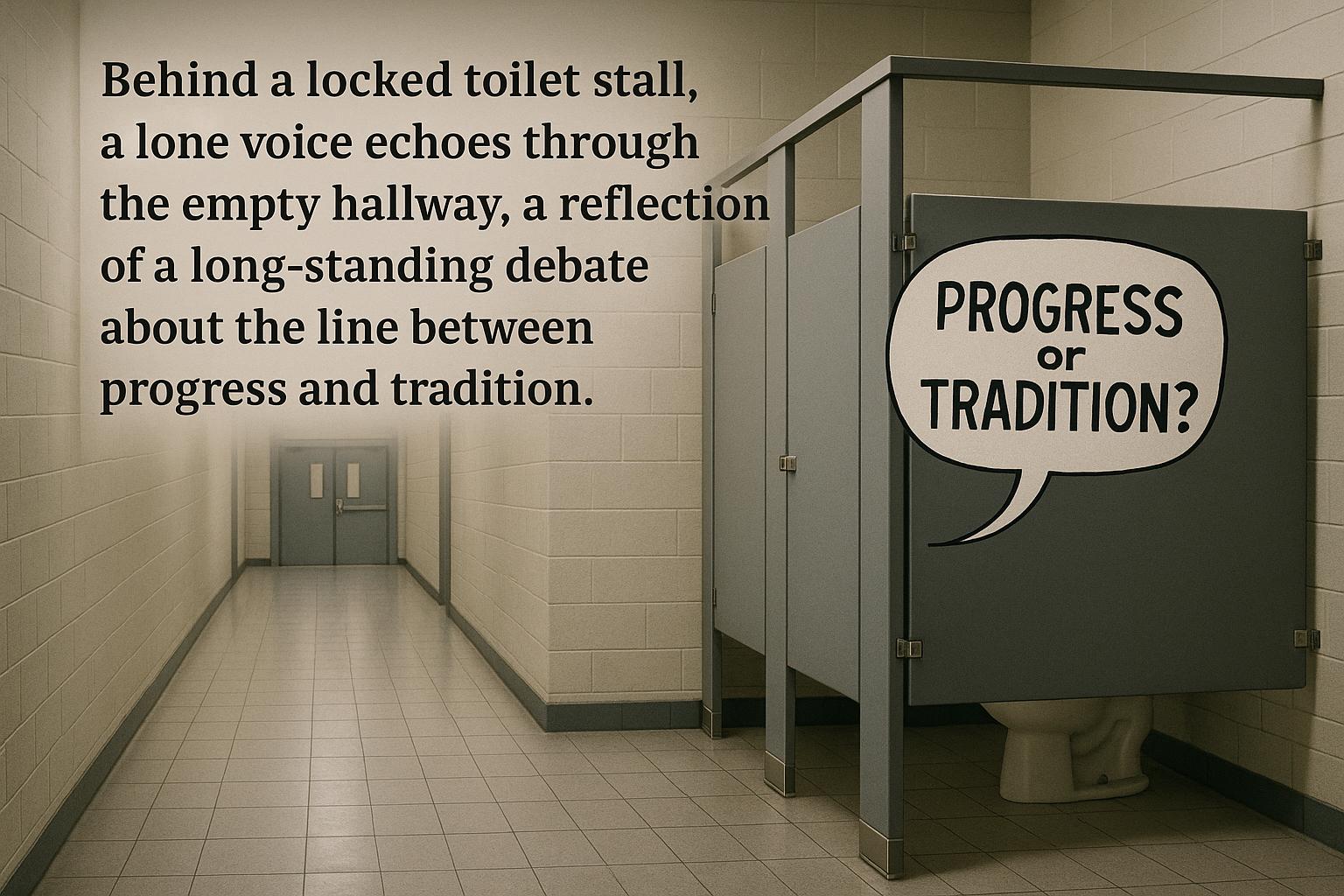Douglas Ross, the Scottish Conservative leader, has called on the Scottish Government to uphold the 1967 legislation mandating separate toilet facilities for boys and girls in schools, as debates over unisex toilets intensify and legal standards remain under scrutiny.
Douglas Ross, the Scottish Conservative leader, has urged the Scottish Government to uphold the legal requirement for separate boys' and girls' toilets in schools, emphasising the importance of maintaining these provisions under existing legislation. Speaking with the Evening Standard, Ross stressed that the 1967 School Premises (General Requirements and Standards) (Scotland) Regulations explicitly mandate separate sanitary accommodations for boys and girls in educational settings. His call follows rising concerns about some local authorities' moves towards mixed-sex or unisex toilet facilities, which many argue conflict with current legal standards.
The 1967 regulations remain the cornerstone for school sanitary provisions, specifying that schools must provide distinct toilet facilities for boys and girls. Government consultation documents seeking to update these regulations highlight several proposed changes, including the introduction of unisex toilets and enhanced accessibility features for disabled pupils. These proposals also include mandatory sanitary disposal units in girls' cubicles for those aged eight and above. However, the proposed updates have not yet superseded the original 1967 legislation, leaving the statutory requirement for separate facilities intact.
This ongoing debate has elicited responses from various advocacy groups, such as Scottish Women, who have openly challenged local councils like Angus and East Renfrewshire over attempts to introduce mixed-sex facilities without appropriate consultation. They underline that the Technical Handbook accompanying the Building (Scotland) Act 2003 supports the 1967 regulations by providing detailed guidance on maintaining separate sanitary provisions. These groups argue that any shift towards unisex toilets should not occur without thorough dialogue with pupils and parents, to ensure respect for privacy and safety concerns, particularly for female students.
Previous consultations by the Scottish Government, including one in 2017, explored the option of unisex facilities but met with mixed responses. Ultimately, the government took no further action, thereby retaining the original 1967 regulations. Critics of the move towards gender-neutral toilets often highlight the absence of explicit legal endorsement for such facilities in current legislation, raising questions about the lawfulness of changes made without full stakeholder engagement.
Internationally, policies such as those in New York State set a comparable framework, mandating separate toilet facilities for boys and girls aged eight and over, except in cases where individual, lockable rooms are provided. These standards underline a broader principle of ensuring student safety, comfort, and dignity within school environments.
As this issue continues to generate debate, experts and advocacy groups alike call for clarity and consultation to balance evolving social perspectives with legal obligations currently enshrined in Scottish education law. Parents and students are encouraged to remain informed and engage with schools and local authorities to ensure that any changes to facilities respect both legal frameworks and the diverse needs of the school community.
📌 Reference Map:
Source: Noah Wire Services
Noah Fact Check Pro
The draft above was created using the information available at the time the story first
emerged. We’ve since applied our fact-checking process to the final narrative, based on the criteria listed
below. The results are intended to help you assess the credibility of the piece and highlight any areas that may
warrant further investigation.
Freshness check
Score:
8
Notes:
The narrative appears to be recent, with the article published on 1 October 2025. However, similar discussions have been ongoing, with notable developments in April 2025 when a judge ordered Scottish schools to provide single-sex toilets. ([bbc.com](https://www.bbc.com/news/articles/c0jz5ed7lv5o?utm_source=openai)) Additionally, the Scottish Government issued updated guidance on 29 September 2025, mandating separate toilets for boys and girls. ([feeds.bbci.co.uk](https://feeds.bbci.co.uk/news/articles/cly6rgeke58o?utm_source=openai)) The article references these events, indicating it is not entirely original. The presence of a press release suggests a higher freshness score, but the recycled content from earlier reports warrants a slight reduction. No significant discrepancies in figures, dates, or quotes were found. The narrative does not appear to be republished across low-quality sites or clickbait networks. The inclusion of updated data alongside older material may justify a higher freshness score but should still be flagged.
Quotes check
Score:
7
Notes:
The article includes direct quotes from Douglas Ross and Education Secretary Jenny Gilruth. The earliest known usage of these quotes appears to be in the article itself, suggesting they are original. However, similar statements have been made by Ross in previous discussions, such as his call for at least three types of toilets in public buildings. ([pressandjournal.co.uk](https://www.pressandjournal.co.uk/fp/news/highlands-islands/4220261/douglas-ross-calls-for-three-or-more-toilets-available-in-public-buildings/?utm_source=openai)) The wording of the quotes varies slightly, indicating potential reuse of content. No online matches were found for the exact phrasing, raising the score but flagging it as potentially original or exclusive content.
Source reliability
Score:
9
Notes:
The narrative originates from the Evening Standard, a reputable UK news outlet. This enhances the credibility of the information presented. The article references official documents and statements from government officials, further supporting its reliability.
Plausability check
Score:
8
Notes:
The claims made in the narrative are plausible and align with recent developments in Scottish education policy. The article accurately reflects the updated guidance issued by the Scottish Government on 29 September 2025, mandating separate toilets for boys and girls. ([feeds.bbci.co.uk](https://feeds.bbci.co.uk/news/articles/cly6rgeke58o?utm_source=openai)) The inclusion of quotes from relevant officials adds credibility to the narrative. The tone and language used are consistent with typical reporting on such topics.
Overall assessment
Verdict (FAIL, OPEN, PASS): PASS
Confidence (LOW, MEDIUM, HIGH): HIGH
Summary:
The narrative is recent and originates from a reputable source, with plausible claims supported by official statements and documents. While some content appears recycled from earlier reports, the inclusion of updated data and original quotes from government officials enhances its credibility. No significant discrepancies or issues were identified, leading to a high confidence in the overall assessment.
